In this post, we have the brassicas, which are a class of vegetables in the Cruciferae family. According to the The Vegetable Expert:
This diverse grouping includes plants whose leaves, flowers, stems, and roots are cooked and eaten. Some of the most common brassicas include broccoli, Brussels sprouts, cabbage, cauliflower, swedes, and turnips. Less familiar brassicas include broccoli raab, collards, cress, kale, kohlrabi, mustard, and bok choy.
If you are interested in learning more about the varieties, please visit the link.
In 2011 I was learning how to garden basically through guesswork. I didn't really put forth the effort to learn what I was growing or how it grows. That didn't stop me. The brassicas were far and above the rest in this first gardening attempt, even though they were grown in less than ideal conditions.
Following up where I left off on the last post in this series.
BROCCOLI
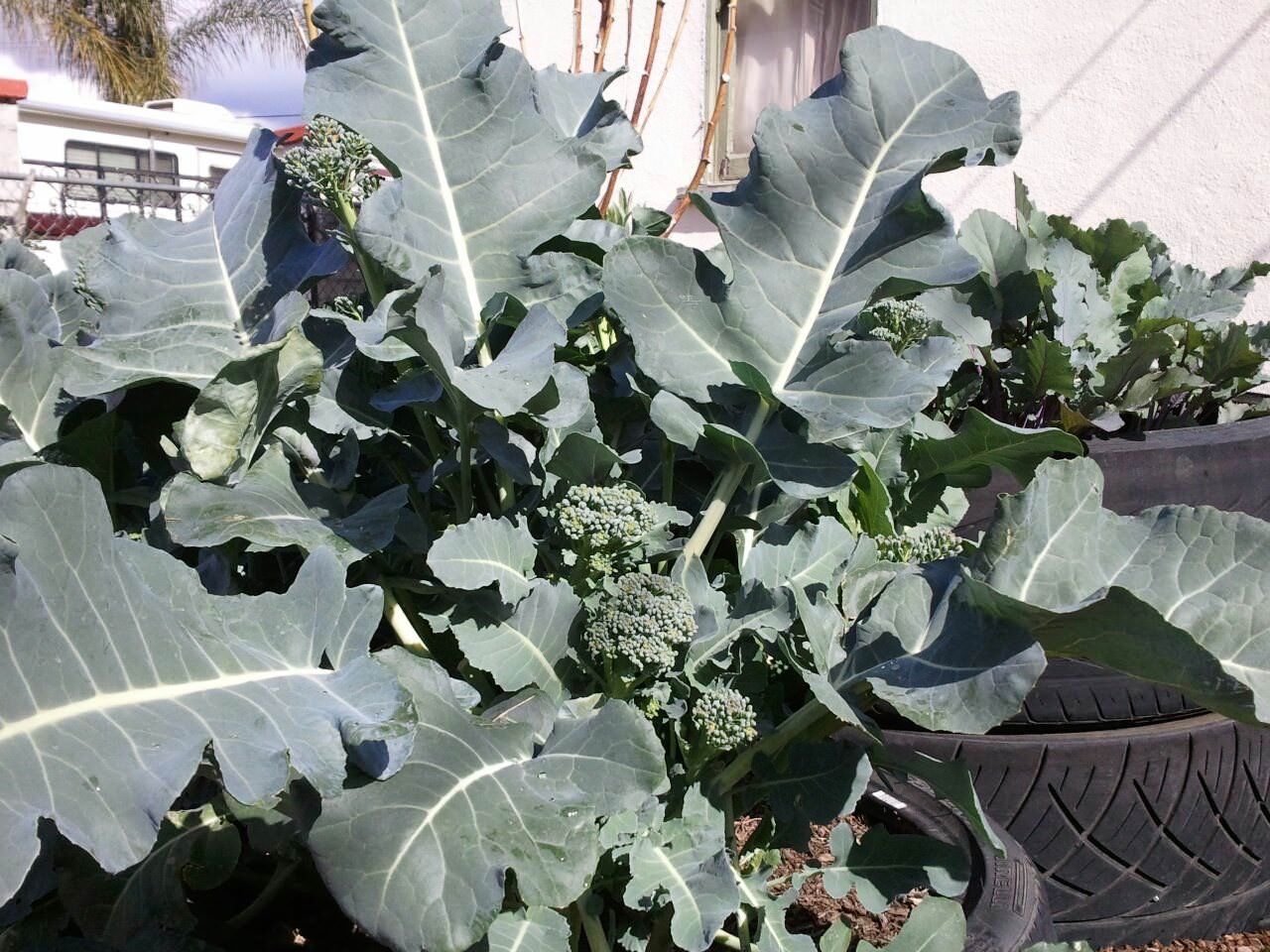
The M.V.P. (Most Valuable Plant) crop this first year was the broccoli. The leaves were beautiful. The flowers, the part we usually eat, quickly appeared because of the heat. The heads could have grown larger if the weather would have been cooler and I had not crowded the planter. There were 5 seeds planted, 4 grew. Of the 4, 3 had almost normal sized flower heads, the other one was fairly small. That's okay because they all tasted delicious!
In the background here you can see the kohlrabi when it was about half way to harvest. All of the brassica plants did better than I think would have happened if I would have bought seedlings in the store, because plants grown from seed seem to grow stronger and healthier. I’m glad I bought the seeds.
The missed opportunity here was not taking advantage of the leaves. (As you read I’m sure you will notice the same theme over and over again. Nevertheless, I will still mention it)
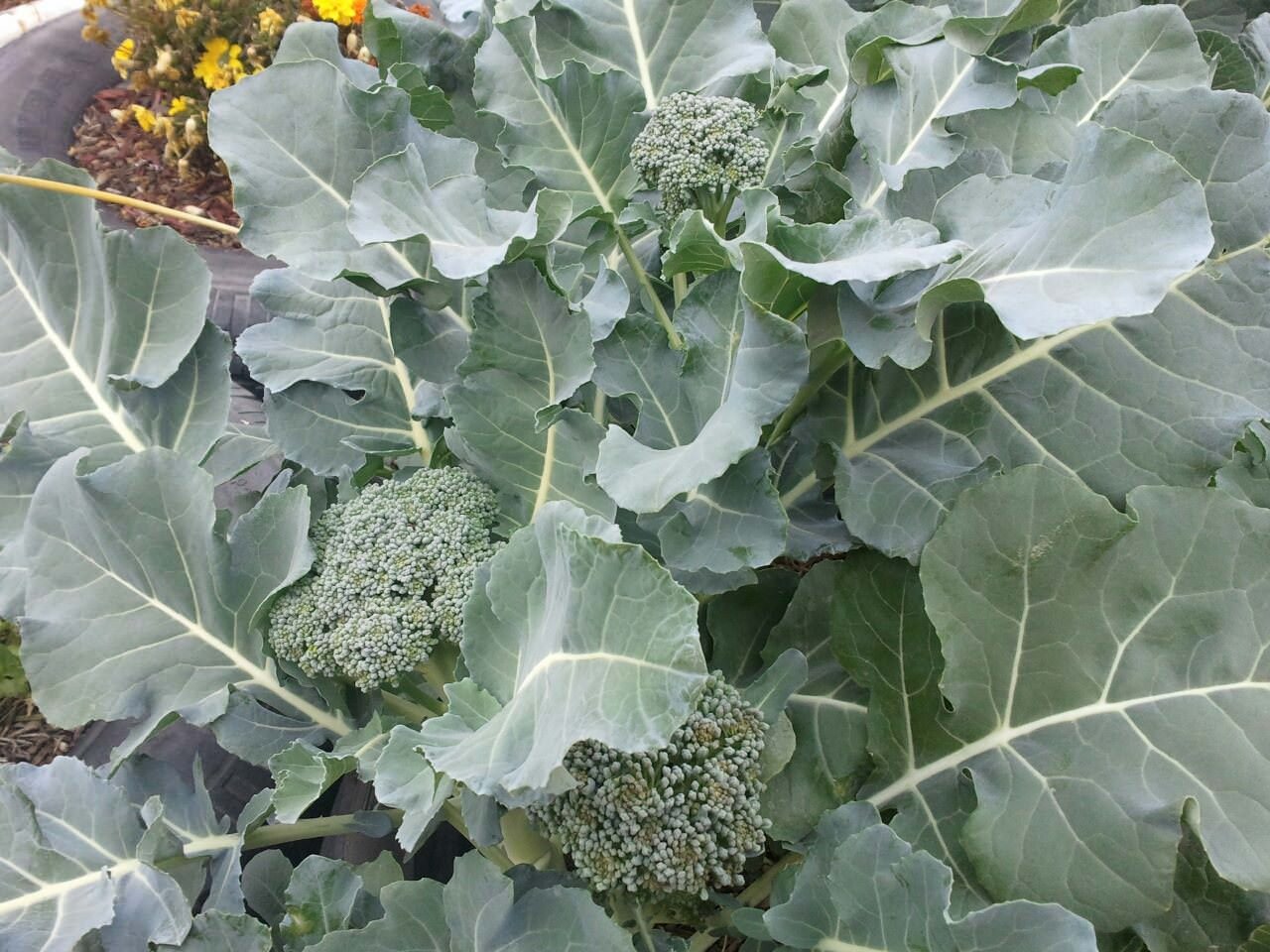
At the top of the picture was the head which grew the smallest. On the bottom you can see a flower was beginning to open up because it was bolting. It still tasted good. This is my favorite picture of the broccoli. Very beautiful. I had no idea what broccoli looks like other than how it’s sold in the store.
Something I did not take a picture of was how the plants developed side shoots which resembled broccoli rabe. I harvested several of them, sauteeing them in Ghee which is how I eat the majority of freshly picked vegetables. The taste of vegetables is great. No need to hide it from me! The side shoots were another feature of the plants I was not expecting. They really took off after I cut the broccoli heads off the plants. Not surprising to me now, because now I know pruning stimulates growth.
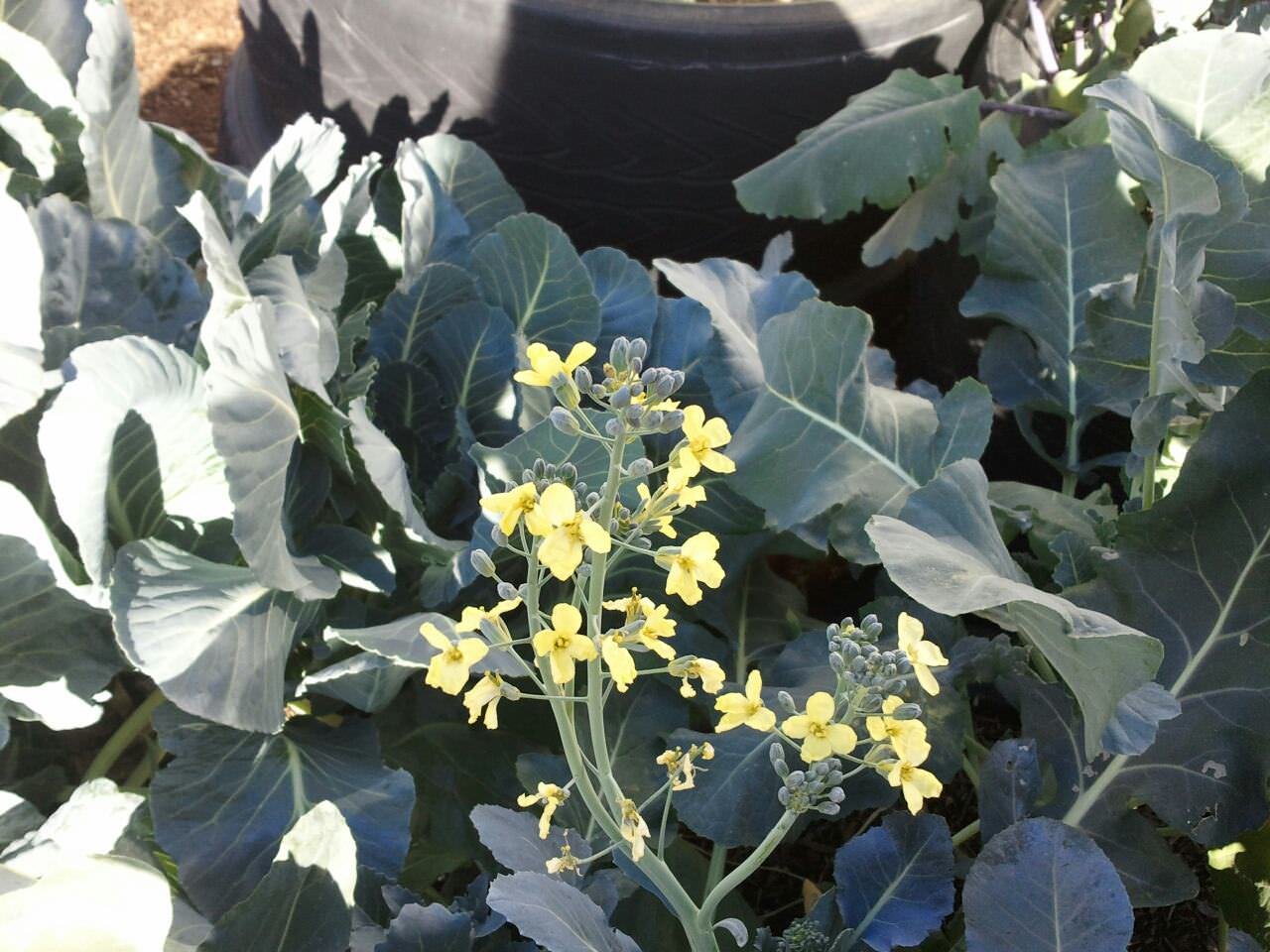
I didn't realize how pretty the opened flowers of broccoli looked. The tiny yellow flowers attracted a lot of pollinators that seemed to be largely missing from my garden, too. I left them growing to enjoy the view.
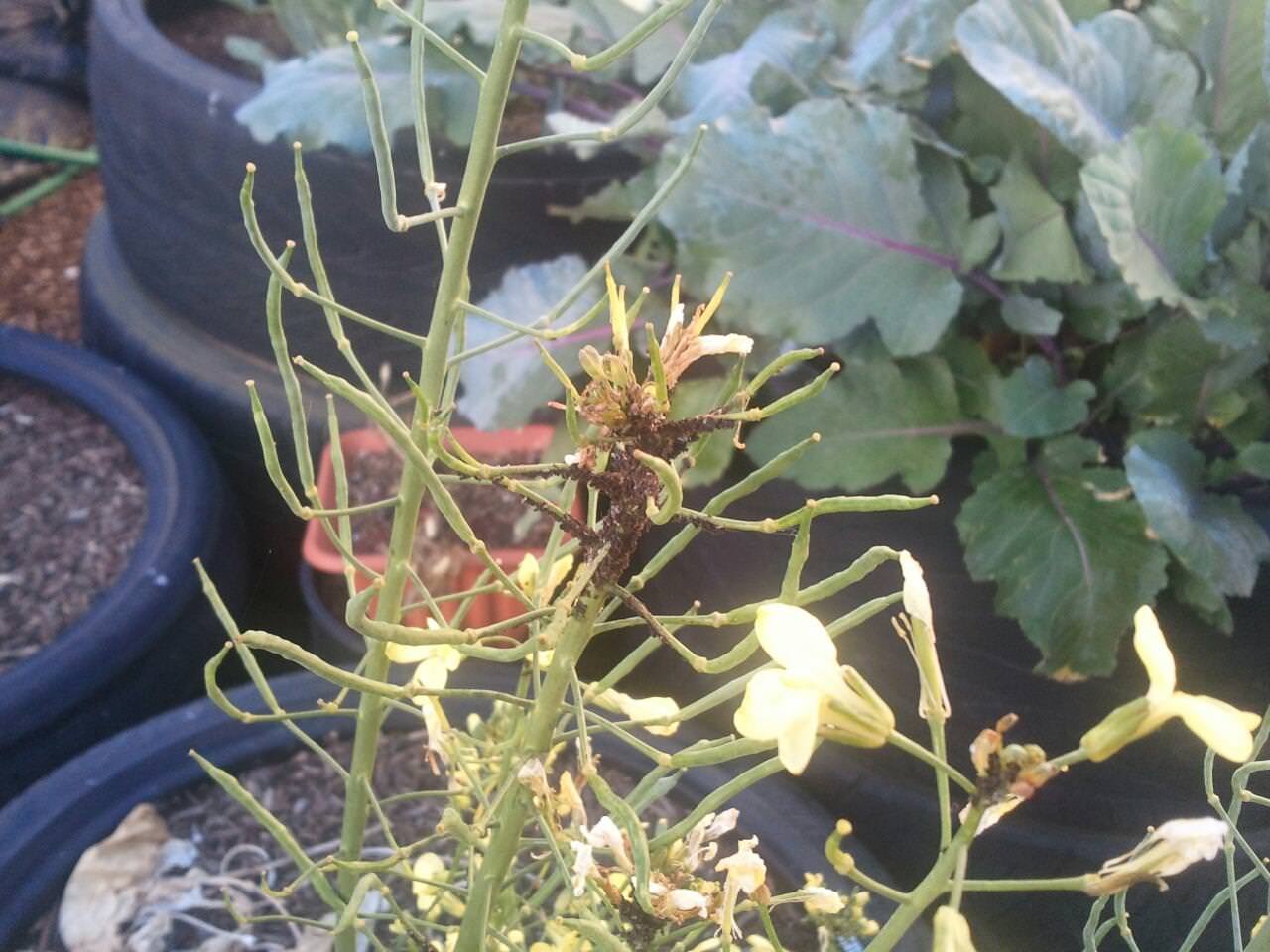
After most of the remaining flowers were spent, two more things I was unfamiliar with showed up. Seed pods and Aphids. The aphids quickly ate most of the plants overnight. Had I known more about the plants, I would have known they’re aphid magnets when grown during the hot time of the year. I tried two things. Soap water. You can see these aphids are brown which is because of the soap water. Instantly killed them. Sorry aphids. What I did after the majority of them were killed was just use a strong spray of water all over the undersides of the leaves and the stalks. They do reproduce and spread fast and can kill plants in just a day or two.
I’ve since read, when grown at the right time of year, aphids are not as big of a problem, or no problem at all, because the temperature is too hot for them to survive. The broccoli was spent, though, so I really didn't need to do much about them. However, the other brassicas would have suffered because the aphids would have moved on to the kohlrabi and brussel sprouts. They started to on the brussel sprouts which killed two out of 3 of them.
Behold glorious seed pods!!! It never dawned on me that broccoli produced seed pods. Yet, there were seed pods all over the stalks. Thinking about it naively, they looked like little green beans, so I tried eating them as such. HAH! Needless to say, they were very tough. Instead of trying to eat them, I should have let them dry on the plant, shelling them later, for more seeds. Especially because these were such healthy prolific plants.
DWARF PAK CHOY
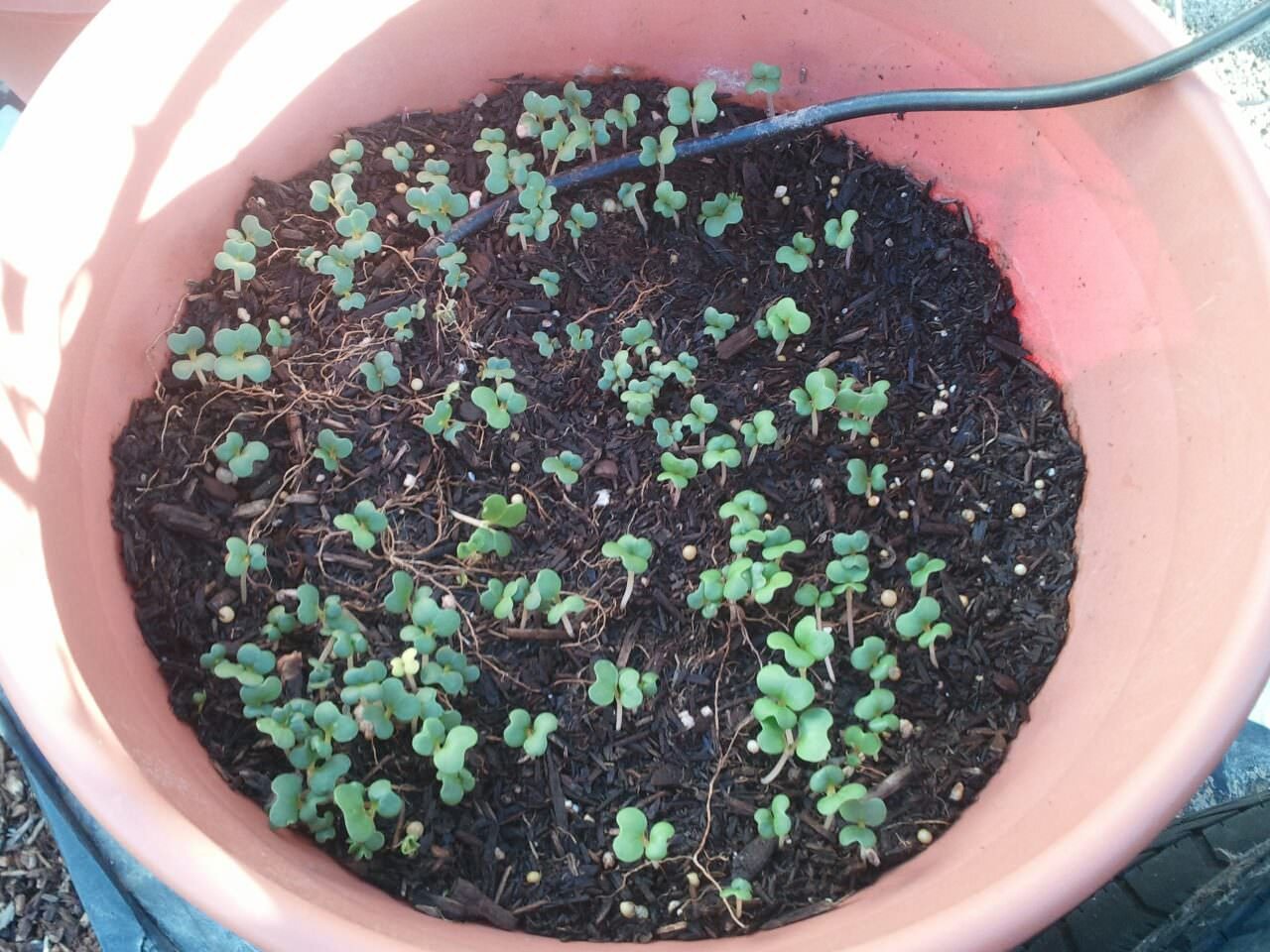
Luckily when I planted the Dwarf Pak Choy, I liberally spread the seeds. One benefit of this ended up being some grew later after the first were picked. That gave me at least 3 harvests before the last ones bolted during the 100+ degrees.
You can see the leftover roots from the prior failed bell peppers because I left them in. I tried pulling the whole plant out, but it was more difficult than I wanted to bother with. Years later I learned this is actually good for the soil as it adds air pockets when the roots decompose, as well as feeding the soil as living compost.
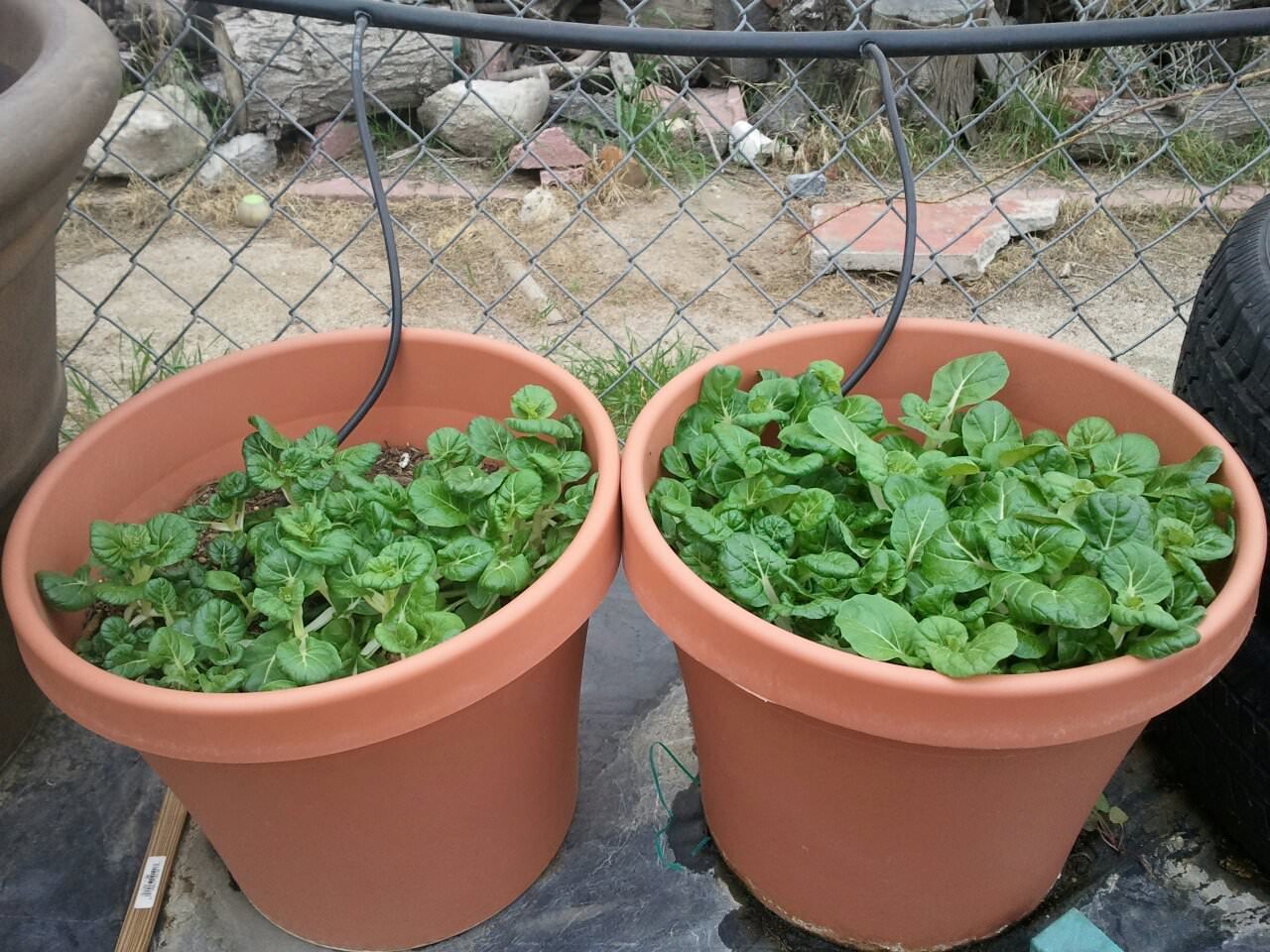
Here were the dwarf pak choy plants shortly before I harvested. Had I thought about it, I could have planted a few more rounds of this to keep a rolling harvest. Of course, rotating crops is important, but through one season this should have been fine. That said, I was happy to have harvested about a pound worth. It was mighty tasty, too. It was sauteed like fresh spinach, in Ghee (or clarified butter), of course.
This was another missed opportunity of seed collecting, because I did leave a few plants in, hoping to harvest the smaller ones in the pot that were growing at a different rate. They bolted because the high dry heat of Southern California was not brassica's favorite growing conditions. When the few remaining plants bolted going from flower to seed, naive and disappointed, I pulled the plants up rather than collecting the seed pods.
PURPLE KOHLRABI
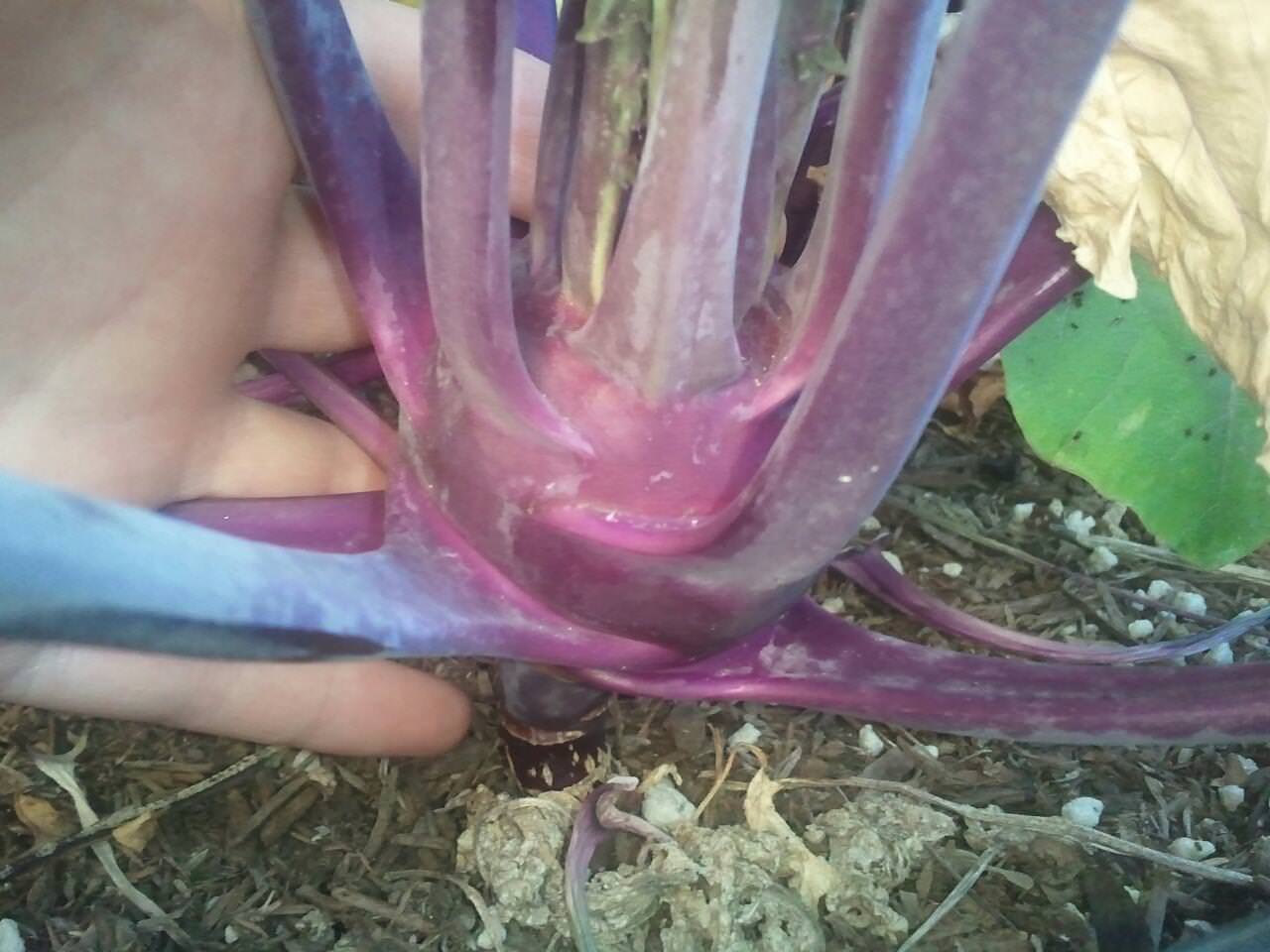
Another vegetable I had never heard of was kohlrabi. As an eclectic person, I went for a lot of unique colorful vegetables when I bought seeds. Later, I learned the vegetables that are darker colored tend to be more nutritious. BONUS! There were both green and purple kohlrabi I planted but the purple was by far the better producer. This is about half the size it was when I harvested it. Overall, in the tire I got about a dozen. Apparently, the larger they get the tougher the skin. If I would have let them get bigger they would have been very tough.
What I liked about it was its flavor and how easy it was to grow. It was between a cabbage and turnip flavor, both are really tasty. I'd always heard how hard cabbages were to grow because they get eaten by pests easily. Plus, they take up a lot of room. If felt like a better use of the limited space. Here is a picture of one of the kohlrabi growing in the tire which originally grew the bush beans.
In the picture you can see little black dots on the leaves because I had a problem with ants because of the aphid problem. They were Tapinoma sessile, also known as Coconut Ants or Odorous House Ants. They have a sweet which some say resembles the smell of rotting coconuts. They farm aphids for a substance known as honeydew. They hadn't entered my house, thankfully, but did invade the perimeter foundation of the 1950's detached garage near where the volunteer honeydew plant grew. They are aggressive ants, form large multiple colonies, have multiple queens, and generally are a huge nuisance. They were very hard to get rid of.
The missed opportunity with the kohlrabi was also not using the leaves to saute or ferment. Now when I grow them I use both parts. The leaves primarily go into my homemade white (mild) kimchi and the bulbs are skinned, diced, and boiled in water with some salt and ghee. Since growing it in 2011, it has become a regular in my gardens.
BRUSSEL SPROUTS
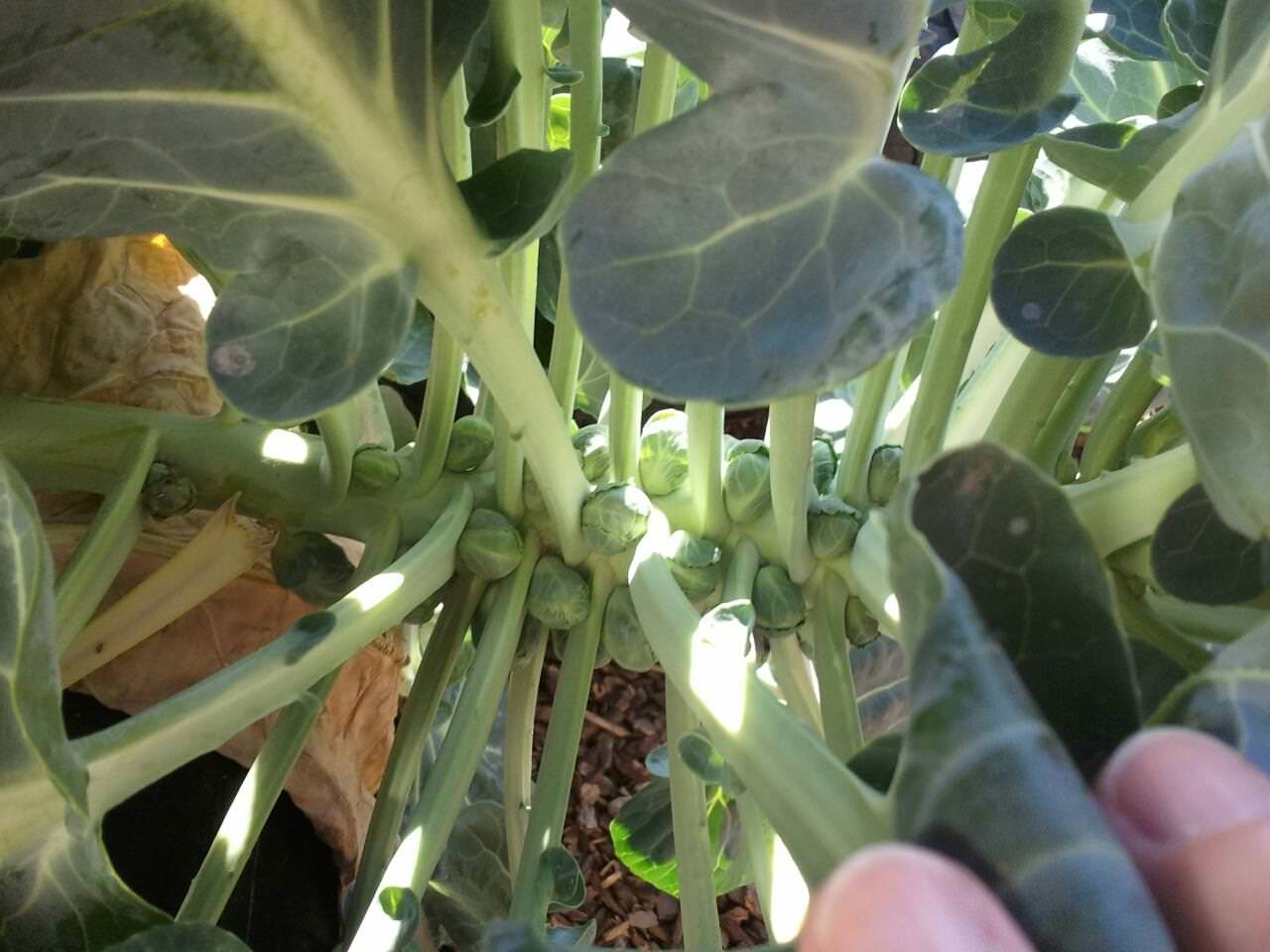
Here is the one brussel sprout plant just beginning to form the "baby cabbages", as I have affectionately been calling them since I was a kid. (broccoli is baby trees, cauliflower is clouds). Generally it grew pretty well. Initially I planted 3 seeds in the planter, but this was the only one that survived. If I remember right, the aphids got to the first two.
To reiterate, if it’s edible, use the leaves in food! I could have made coleslaw, kimchi, stuffed them with something, sauteed them with meat and onions. My garden would have been more "productive" if I would have made better use of all the edible parts of the plants. But, we learn as we go. At least I do.
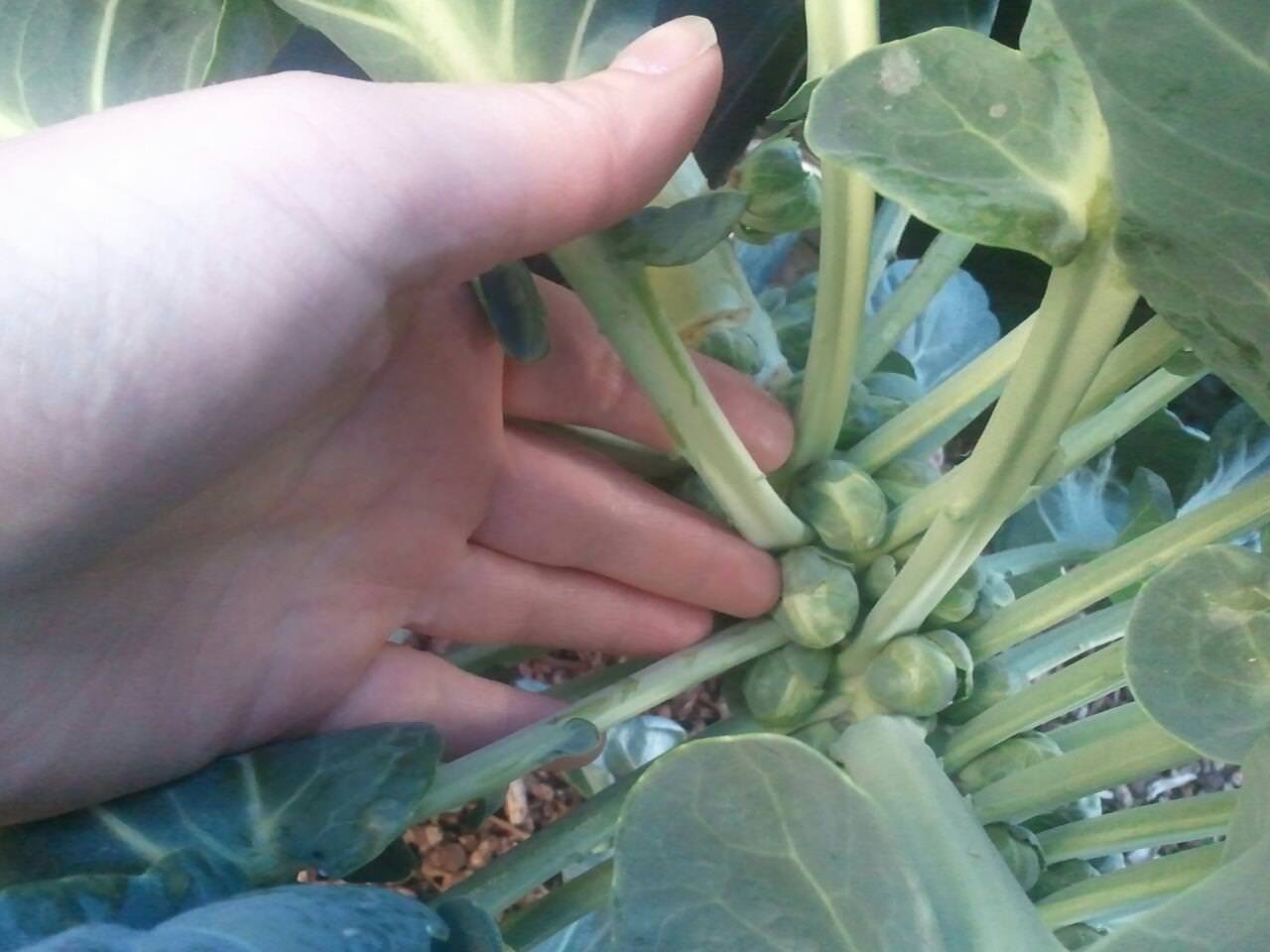
This is when they were about halfway to harvest. They were smaller than some of the fresh ones being sold in the store, but about the size of the brussel sprouts you would find in the freezer section. I harvested enough for 2 servings, boiling them in salted water with ghee.
IN SUMMARY, I LEARNED APHIDS LIKE BRASSICAS BUT NOT BEING WASHED OFF WITH WATER. THEY ALSO LIKE COOLER WEATHER. FINALLY, DON'T MISS SEED COLLECTING OR COOKING OPPORTUNITIES.
ONCE AGAIN, HERE IS THE DESIGN I TRANSLATED INTO A C.A.D. DRAWING
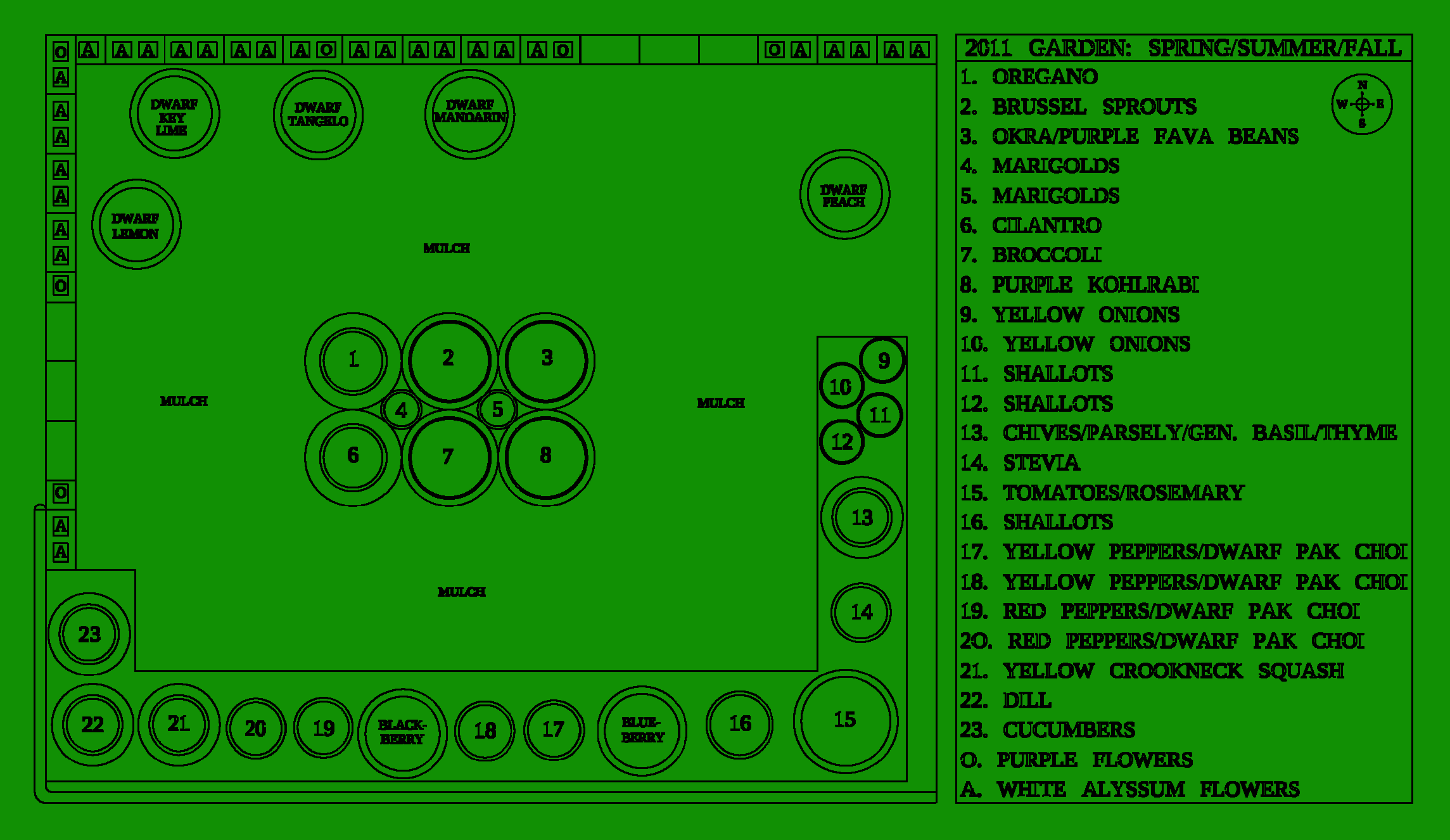
For reference, here are the previous posts:
STORIES:
BAREFOOT IN THE BOONIES: EXPOSING MY ROOTS (introduction post)
BAREFOOT IN THE BOONIES: Chapter 1
BAREFOOT IN THE BOONIES: FAMILY OWNED: Chapter 1 Section 2
2011 GARDEN:
2011: DESIGN AND BUILD
2011 BACKYARD TRELLIS, PERIMETER, & VOLUNTEER
2011 TIRE PORTION OF THE GARDEN
TO BE CONTINUED...

That's all for now. Until the next post... If you found this post enjoyable, please consider upvoting, resteeming, following, and commenting! Thank you kindly for reading.

Phedizzle signature created by @bembelmaniac

Proud to be a member of the following:




So come say hello in the following Discord chat rooms:

